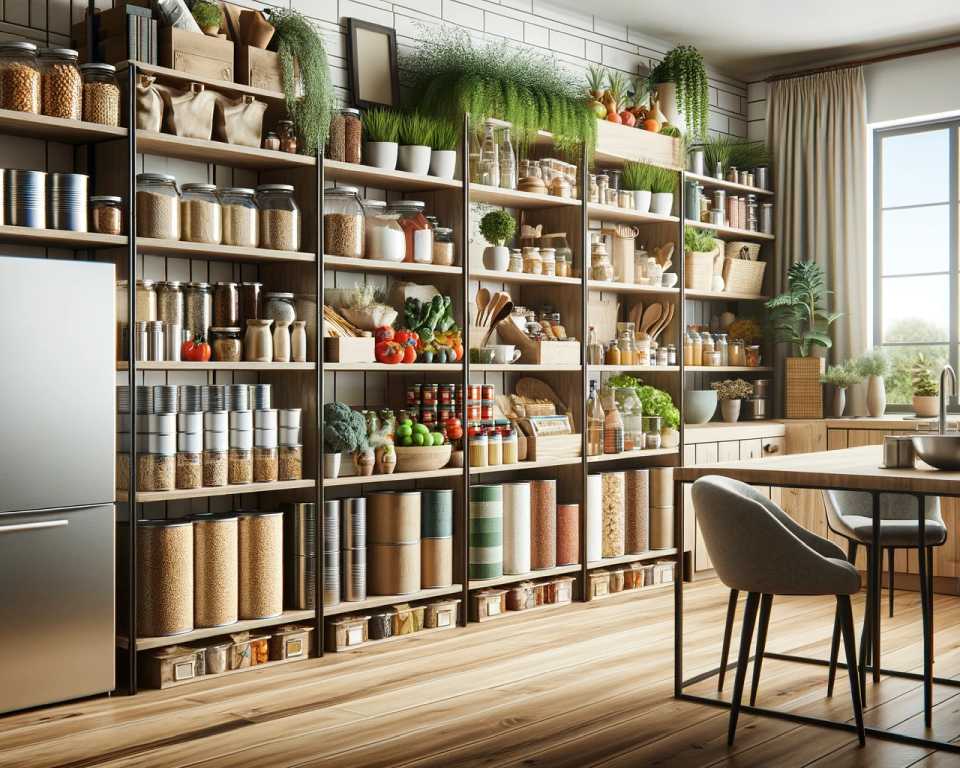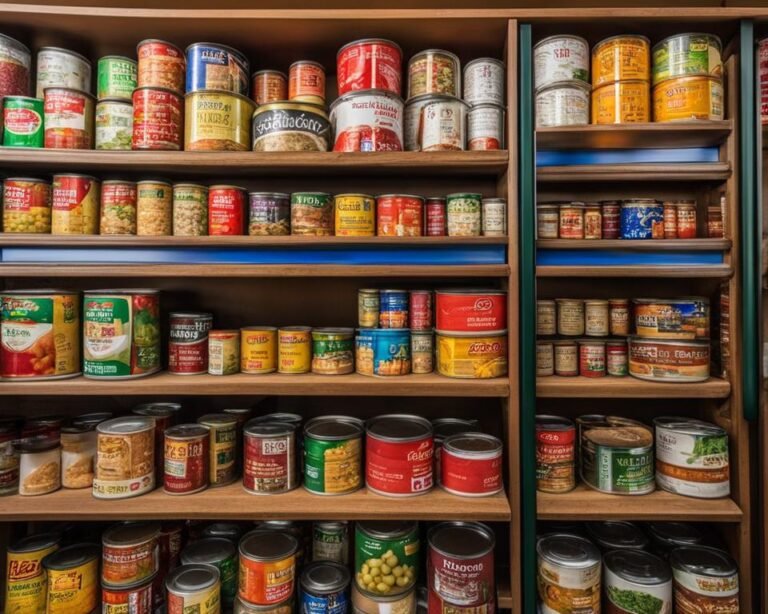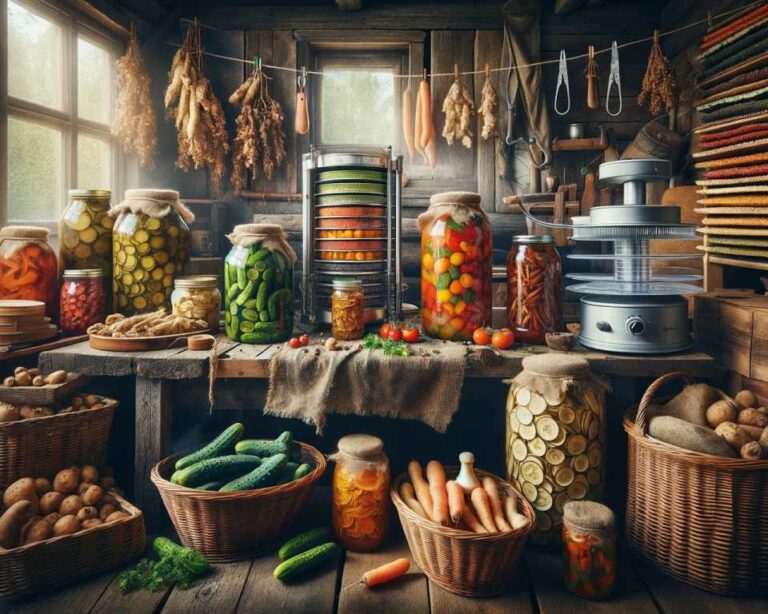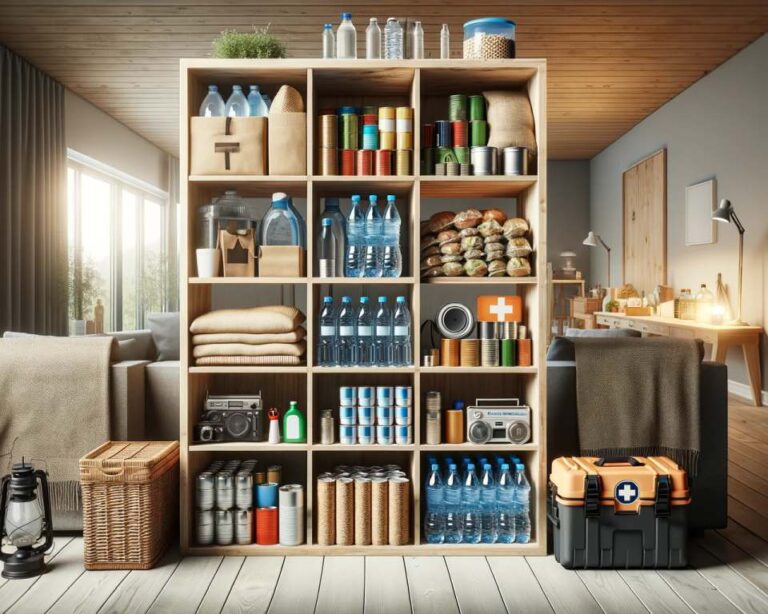Food Storage Essentials: What to Buy and How to Store It
Having a well-developed food storage plan and a robust stockpile is essential for preppers and anyone looking to be prepared for emergencies. Whether you’re concerned about natural disasters, economic downturns, or other unforeseen circumstances, having an adequate supply of food can give you peace of mind and ensure the well-being of your family.
When it comes to food storage for preppers, there are a few key considerations to keep in mind. Not only is it important to stock up on essential food items, but it’s also crucial to know how to properly store them to maintain their freshness and nutritional value.
In this article, we will explore the importance of food storage, provide tips on how to get started, and offer essential advice for storing emergency food. By understanding these food storage essentials, you can be better prepared to face any unexpected challenges that may come your way.
Key Takeaways:
- Having a well-developed food storage plan is crucial for preparedness
- Understanding the importance of food storage and how to start can help you build a robust stockpile
- Properly storing emergency food is essential to maintain freshness and nutritional value
- Consider your family’s specific needs and budget when starting your food storage journey
- Labeling, inventory lists, and food preservation techniques can help you stay organized and maximize your food supply
Why is a Food Storage Plan Important?
A food storage plan is crucial for ensuring that you and your family have access to food during emergencies or times when the usual food supply may not be easily accessible. It helps safeguard against potential shortages, natural disasters, or economic downturns. By having a food storage plan, you can maintain self-reliance and independence, ensuring the safety and security of your loved ones.
Having a well-developed food storage plan and a robust stockpile is essential for preppers, individuals practicing emergency preparedness, or anyone looking to be self-sufficient during challenging situations. The importance of food storage cannot be overstated, as it provides a sense of security and peace of mind.
“Food is one of the fundamental needs for survival, and having a reliable food storage plan is like having insurance for uncertain times.” – Emma Wilson, Emergency Preparedness Expert
During emergencies, such as natural disasters or unforeseen disruptions to the food supply chain, having a well-stocked food supply allows you to rely on your reserves instead of depending solely on external resources. This independence brings a sense of reassurance, knowing that you can provide for yourself and your loved ones even when traditional sources of food may be limited or inaccessible.
Additionally, having an established food storage plan ensures that you have access to essential nutrition in times of crisis. It allows you to store a variety of foods with long shelf lives, ensuring that your dietary needs are met even during extended emergencies. A well-planned food storage strategy includes a mix of canned goods, dry staples, and specialized emergency food items, providing a balanced and nutritious diet.
Another significant benefit of having a food storage plan is financial resilience. By storing food ahead of time, you can mitigate the impact of rising food prices or economic downturns that may result in food shortages. Having a stockpile of essential ingredients and pantry staples enables you to avoid panic buying and spend your resources wisely.
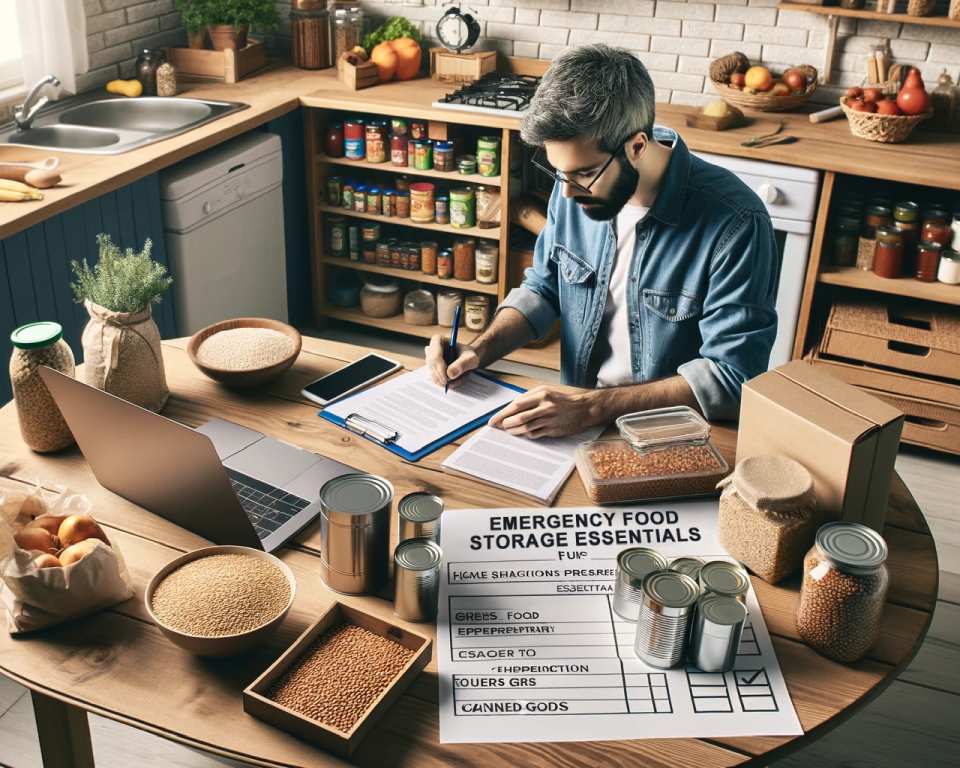
How to Get Started With Emergency Food Storage Essentials
Getting started with food storage is an important step in preparedness planning. Whether you’re preparing for natural disasters, economic uncertainty, or other emergencies, having a well-stocked pantry can provide you with peace of mind and security. Here are some practical steps to help you get started with your emergency food storage plan.
1. Set a Budget
Before diving into food storage, it’s essential to set a budget. Determine how much you can comfortably allocate each month towards building your stockpile. By having a budget in place, you can make strategic buying decisions and ensure that you’re not overspending.
2. Assess Your Family’s Needs
Consider the specific dietary requirements, preferences, and allergies of your family members. This will help you determine the types and quantities of food you should include in your emergency storage. Take into account any special dietary guidelines or medical conditions, ensuring that you have appropriate food options for everyone.
3. Start Small
Building a substantial emergency food supply doesn’t happen overnight. Start by purchasing a few extra non-perishable items each time you go grocery shopping. This gradual approach allows you to align with your budget and avoids overwhelming your storage space. Over time, your stockpile will grow, providing you with a well-rounded food storage plan.
4. Keep an Eye Out for Deals
Look for good deals and sales on food items that have a longer shelf life. Many stores offer discounts on items nearing their expiration dates, allowing you to save money while still getting quality food for your storage. Consider joining loyalty programs or exploring bulk-buying options to maximize your savings.
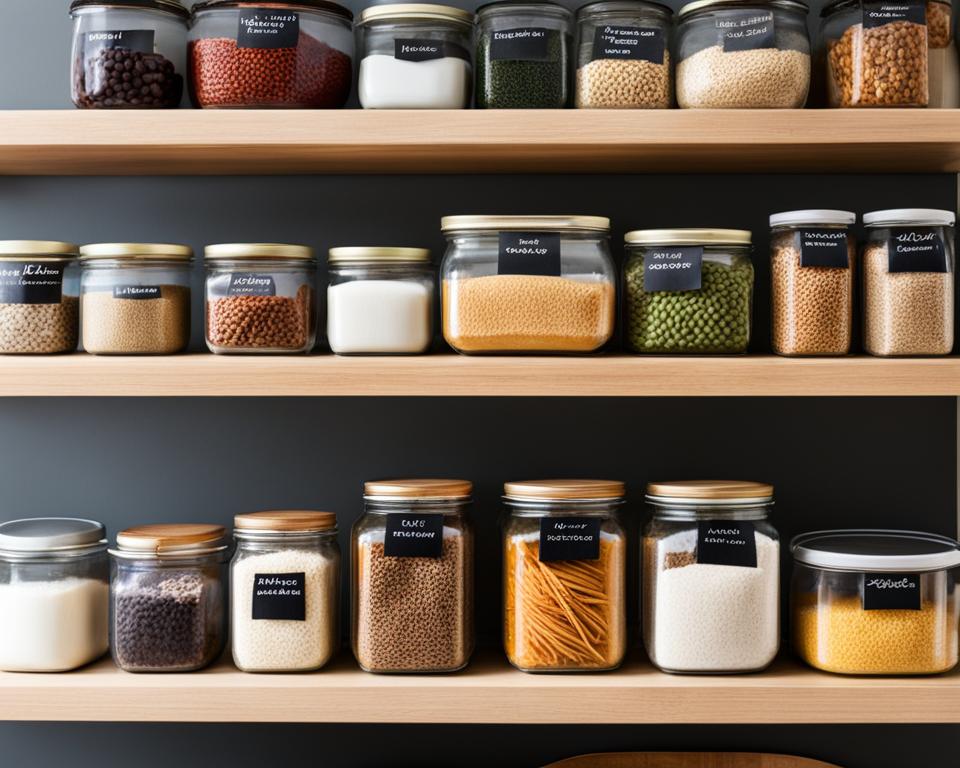
5. Rotate and Use Your Inventory
Once you’ve started building your food storage, it’s crucial to rotate and use your inventory regularly. Organize your stockpile so that the oldest items are used first, ensuring that food doesn’t go to waste. Incorporate your emergency food items into your regular meal planning to maintain freshness and ensure that your supply remains up-to-date.
By following these steps and adopting a systematic approach, you can confidently navigate the process of building your emergency food storage. Remember, it’s not a race but a journey towards preparedness and self-sufficiency.
Food Storage Tips and Techniques
When it comes to emergency food storage, organization and preservation are key. Properly labeling your emergency food items and creating an inventory list can help you stay organized and ensure that you’re using food before it expires. By implementing food preservation techniques, you can extend the shelf life of your food and have a wider variety of options during emergencies.
Labeling your emergency food is essential for easy identification and rotation. Make sure to include the name of the food item, the date it was stored, and the expiration date. This way, you can quickly assess the freshness of your supplies and use the oldest items first. Pro tip: Use waterproof labels or markers to prevent smudging and make the labels more durable.
Creating an inventory list is a practical way to keep track of your food storage. This list should include the name of each item, quantity, and location in your storage area. By regularly updating your inventory list, you can easily identify any items that need replenishing or rotating. It also helps you plan meals more efficiently, ensuring that you have a well-balanced supply of essential food items.
Preserving food for long-term storage is crucial to ensure that it remains safe and nutritious. There are various food preservation techniques that you can learn as a beginner. Drying food is a popular and easy method that involves removing moisture from fruits, vegetables, and meats. Freezing is another effective technique that helps maintain the quality of food while prolonging its shelf life. Fermenting is a traditional method that not only preserves food but also enhances its flavor and nutritional value.
By incorporating these food storage tips and techniques, you can create a well-organized and efficient emergency food supply. Remember to label your food items, create an inventory list, and explore different preservation methods. With these practices in place, you’ll be better prepared to handle emergencies and ensure the longevity of your emergency food stock.
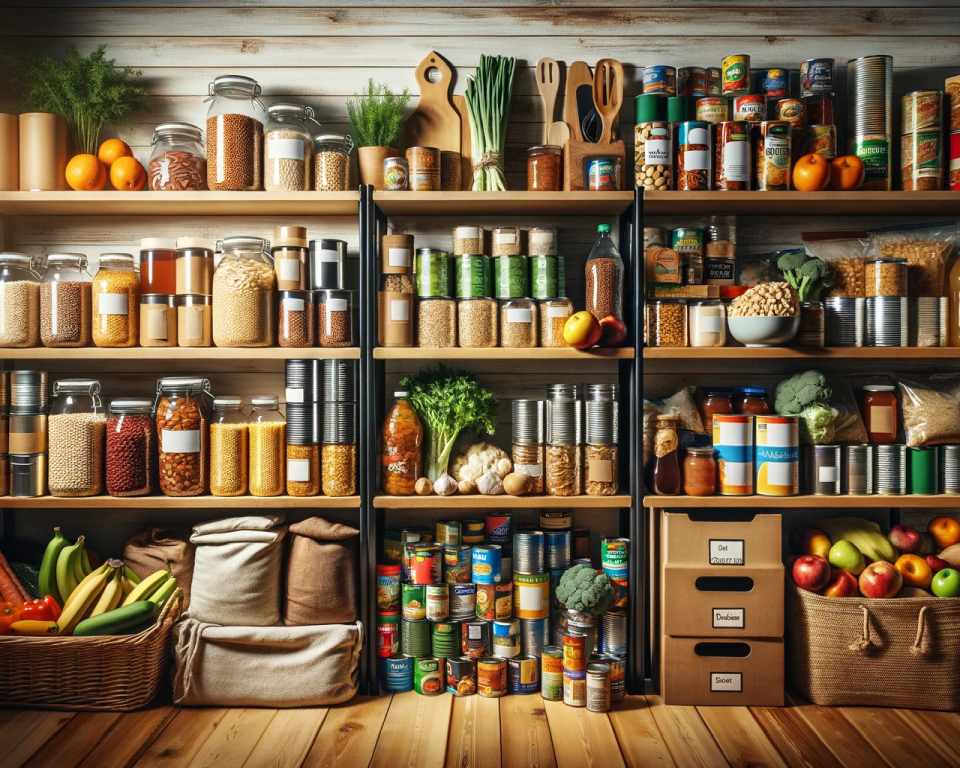
Developing a Two-Week Emergency Food Supply
While a three-day emergency supply is a good start, it’s important to plan for longer-term emergencies. Building a two-week emergency food supply involves increasing the quantity of basic foods you normally keep on your shelves and considering your nutritional needs.
Creating a well-rounded and nutritious supply of food is essential for sustaining yourself and your family during extended emergencies. Here are some food ideas for emergency preparedness:
Ready-to-Eat Canned Foods
Stock up on a variety of ready-to-eat canned foods such as soups, vegetables, fruits, and protein sources like canned tuna or chicken. These items have a long shelf life and can provide essential nutrients during emergencies.
Dry Staples
Include dry staples like rice, pasta, beans, and oats in your emergency food supply. These versatile ingredients can be used to create a variety of meals and provide much-needed carbohydrates and protein.
Dehydrated or Freeze-Dried Foods
Add dehydrated or freeze-dried foods to your stockpile as they are lightweight, have a long shelf life, and retain most of their original nutritional value. These foods are a convenient option that can be rehydrated easily with water.
Remember to check expiration dates regularly and rotate your stockpile to ensure you are consuming the oldest items first. Additionally, consider any specific dietary restrictions or preferences when planning your emergency food supply.
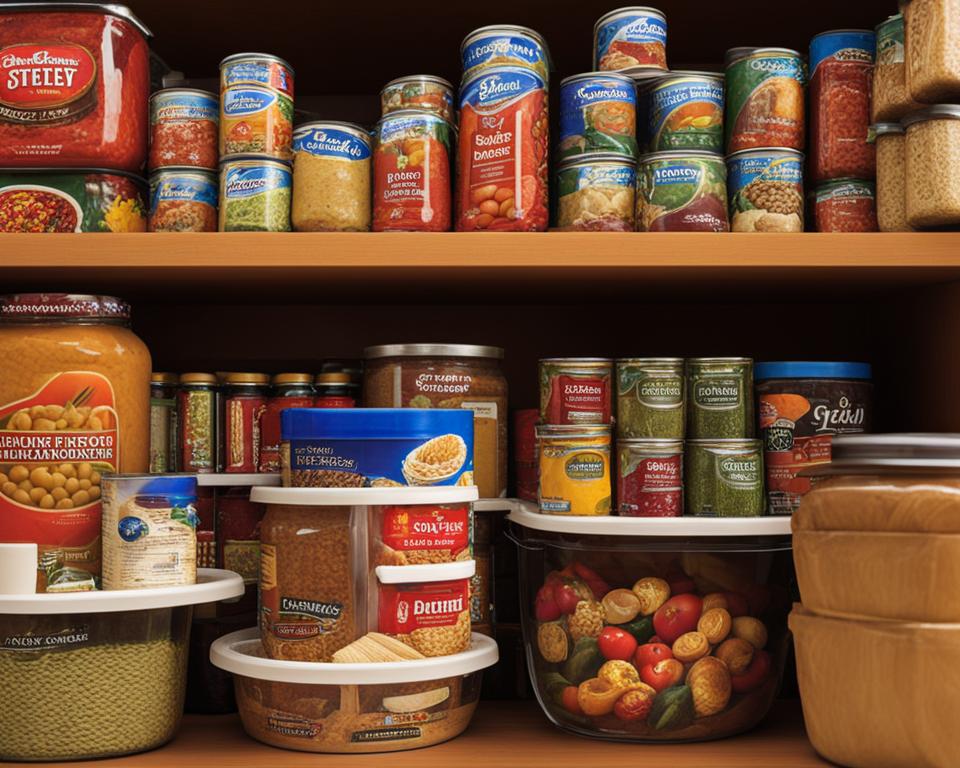
Having a well-prepared two-week emergency food supply provides peace of mind and ensures that you and your loved ones have access to nourishing meals during extended emergencies. By incorporating a variety of ready-to-eat canned foods, dry staples, and dehydrated or freeze-dried foods, you can create a resilient and nutritious food stockpile to weather any unexpected circumstances.
Cooking Without Power: Tips for Emergency Cooking
During emergencies, it’s essential to have alternative cooking methods in case you don’t have access to electricity. We’ll discuss some efficient tips for cooking without power and the different options available for emergency cooking.
Alternative Cooking Methods
When the power goes out, traditional kitchen appliances become unusable. In such situations, it’s important to rely on alternative cooking methods. Here are some viable options:
1. Outdoor cooking: Use a fire pit, charcoal grill, or camp stove in a well-ventilated outdoor area. Make sure to follow all safety guidelines and check your local regulations regarding open flames.
2. Portable stoves: Invest in a portable stove specifically designed for emergency cooking. These stoves are lightweight, compact, and run on propane or butane. They are highly efficient and can be easily packed in an emergency kit.
3. Candle warmers, chafing dishes, and fondue pots: These are excellent options for heating up canned or pre-cooked foods without electricity. They provide a safe and controlled heat source.
Planning for Emergency Cooking
When it comes to emergency cooking, preparation is key. Here are some essential tips to help you plan ahead:
1. Stock up on non-perishable food items: Build a supply of canned goods, dry goods, and other long-lasting food items that can be easily prepared without electricity.
2. Invest in cookware suitable for alternative cooking methods: Ensure you have durable pots, pans, and utensils that can be used with your chosen cooking method. Some options include cast iron cookware and stainless steel pots.
3. Gather fuel sources: If you choose to use a portable stove or grill, make sure you have an ample supply of fuel, such as propane or butane canisters. Regularly check expiration dates and replenish as needed.
By considering these tips and having the necessary equipment and tools, you can ensure that you can cook meals and meet your nutritional needs even during power outages or other emergency situations.
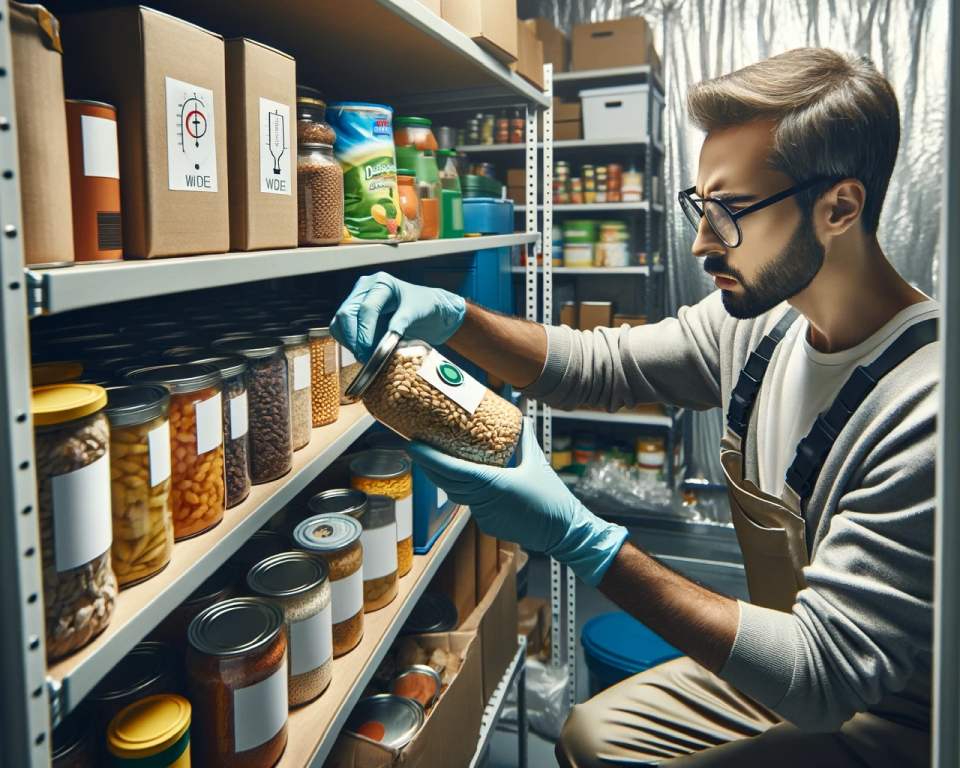
Ensuring Food Safety in Emergency Storage
When it comes to storing food for emergencies, ensuring food safety is of utmost importance. Proper storage practices can help prevent the risks of contamination and spoilage, giving you peace of mind during challenging times. Here, we will discuss some essential steps to guarantee the safety and quality of your emergency food supply.
Regularly inspecting canned food is a crucial part of maintaining food safety. When checking your canned goods, be on the lookout for any signs of damage, such as bulging, rusting, or broken seals. If you come across any damaged cans, it’s best to discard them to prevent the possibility of bacterial growth or contamination.
In the event of a flood, it’s important to clean and sanitize sealed cans that may have been exposed to water. Floodwaters can carry harmful bacteria that can contaminate your food. Thoroughly wash the cans, including the lids, with clean water and soap. Afterward, sanitize them using a mixture of one tablespoon of bleach per gallon of water. This extra step will help ensure the safety of your canned food after flooding.
Understanding the shelf life of canned food is essential in maintaining its quality and safety. While canned food can have a long shelf life, it’s important to rotate your stock and consume the oldest cans first. By following the principle of “first in, first out,” you can ensure that your emergency food supply remains fresh. Additionally, storing canned food in cool, dry locations away from direct sunlight will contribute to its longevity.

